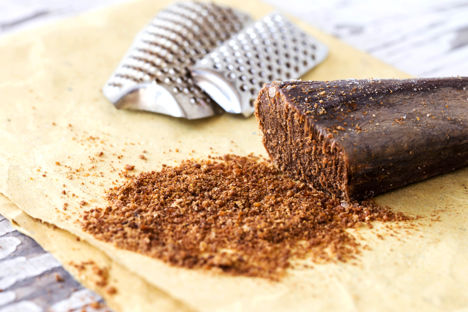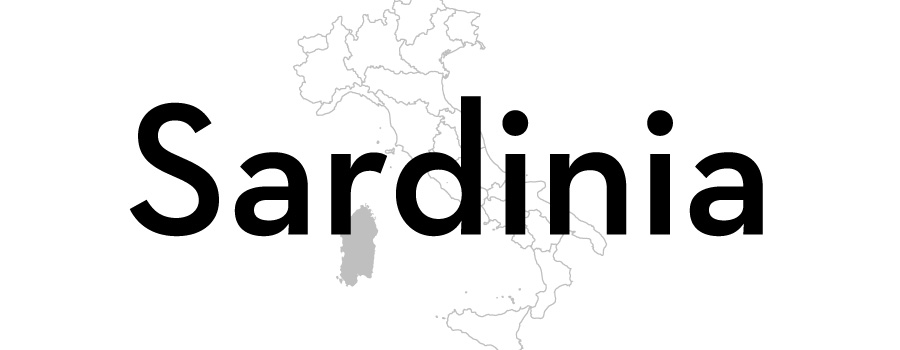
Bottarga: the precious gift of the sea
Luciana Squadrilli introduces us to bottarga, the Sardinian and southern Italian delicacy of cured fish roe, and describes the differences between the various varieties and how they are best used in recipes.
Bottarga: the precious gift of the sea
Luciana Squadrilli introduces us to bottarga, the Sardinian and southern Italian delicacy of cured fish roe, and describes the differences between the various varieties and how they are best used in recipes.
Known as ‘Mediterranean caviar’, bottarga can be thought of as the truffle of the sea, as it is commonly grated over dishes, just like the fungus, adding its unique aroma and flavour to many recipes. The salted and cured fish roe was all but unheard of outside the Italian islands of Sicily and Sardinia until relatively recently, but is now becoming popular all over the world.
Originating from the Arabic word battarikh, this is an ancient product first created by fishermen not willing to waste any part of the fish they caught. To conserve the delicious and delicate eggs, they used that most ancient and common of preservatives: salt. Due to its unique taste and the laborious, time-consuming process needed to create it, bottarga quickly became a precious and refined product that was quite hard to find far from where it was produced (at least until the 1950s) and was often given as a valuable gift.
There are some regional differences when it comes to making bottarga. The fish used can vary from grey mullet and tuna to swordfish or other similar species. In Sicily and the small Sardinian island of Carloforte – where the old tonnara, the traditional system of fishing nets and boats to catch tuna, still exists – bottarga is usually made with tuna roe. This variety is usually darker and has a stronger taste than grey mullet roe, and requires a longer processing time – up to thirty days – involving washings and salt baths to remove any blood. It has quite a solid texture, an even, dark red colour and a squared-off shape due to being dried under heavy presses. It is usually made once the tuna season ends in May.
In the salt lakes of Cabras (Sardinia) and in the lagoon areas near Orbetello (Tuscany), bottarga is mostly made with the roe of grey mullet. This is the most refined and expensive one and, due to its golden or amber colour, is often called ‘Sardinia's gold’. In Sardinia, 150 tonnes of bottarga is consumed every year and it takes 2,300 tonnes of grey mullet to make this much, meaning some of the fish are shipped in from other parts of Italy. Its shape is looser and more natural than the tuna variety and it is slightly chewy when eaten. Usually made in September, it has an intense and elegant flavour, with a pleasantly bitter aftertaste.
How bottarga is made
Despite the differences, both varieties are made in pretty much the same way. The roe pouches are delicately extracted from the fish's belly, so as not to damage the membrane containing the roe (although if this happens, many producers use the roe to make ground bottarga, which is much appreciated for its convenience). The sacks are washed in iced water (several times, in the case of tuna) and carefully massaged by hand to eliminate any air pockets. They are then cured in sea salt, usually set in overlapping layers for a few weeks, although this changes depending on the climate and producer preference. The resulting slabs are washed again and pressed to eliminate brine and other liquids. After that, the ageing phase begins; the slabs are taken into an ‘ageing room’ which must be wide and well ventilated and dried, either hung from the ceiling or more often laid down on wooden shelves. In order to achieve a uniform drying process, they have to be periodically turned and are matured for up to several months depending on the size of the roe.
The result of all this is dry and intensely flavoured slabs (sometimes coated in beeswax or paraffin to keep them soft) which can be grated or thinly sliced. Be it shaved on warm bruschetta, grated over steaming pasta, infused in extra virgin olive oil or even used in more creative ways to season different dishes such as salad (it goes perfectly with raw artichokes), risotto or even meat, bottarga lends a unique and distinctive oceanic flavour to all sorts of dishes.



